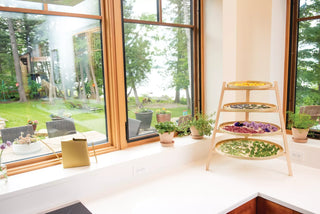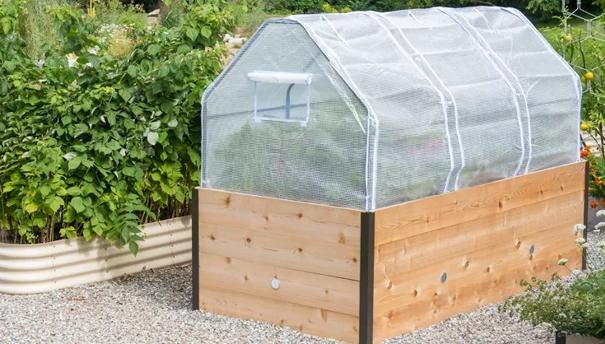Fresh herbs add pizzazz to any meal. You can enjoy your garden-fresh herbs all year with one of several easy techniques. Whatever method you choose, be sure to harvest herbs after the flower buds appear but before they open. That way, you'll be sure to get the highest concentration of essential oils. Early morning is the best time to pick your herbs, after the morning dew has evaporated but before the sun gets too hot.
Freezing
Freezing preserves essential oils, and it's the oils that give herbs their flavor. Freezing herbs is easy. There's no need to blanch them; just rinse, remove the leaves from the stems and let them dry on a flat tray.
You can then put a bunch of these leaves together in a bag and freeze them. You'll end up with a clump of herbs that you can cut up and add to sauces, soups, etc.
Or you can freeze the leaves individually first on a flat tray (like a cookie sheet) and then place them in a plastic bag; when you open the bag later, you can pick out as many individual leaves as you like.
Another great method is to blend the herbs with oil to make a paste, which you can then freeze in a plastic container, bag or in ice cube trays. You can freeze just one kind of herb, such as basil, or make your own blend, such as oregano, thyme, parsley and sage.
Herbs for Freezing
- Basil (retains flavor, but discolors)
- Chervil
- Cilantro
- Chives
- Dill
- Lemon balm
- Lemon verbena
- Lovage
- Mint
- Oregano
- Parsley
- Rosemary
- Sage
- Savory
- Sorrel
- Sweet cicely
- Sweet marjoram
- Tarragon
- Thyme
Drying
Some herbs, such as oregano, sage and thyme, can be air-dried. Just hang small bunches in a well-ventilated room, away from light. When leaves are dry, remove them from their stems and store in an airtight jar.
Unless you live in a very arid climate, herbs such as basil and parsley, which have thick, succulent leaves, are better dried in a dehydrator. Once dry, store them in an airtight container.
Herbs for Drying
- Basil
- Dill
- Fennel
- Lovage
- Mint
- Oregano
- Parsley
- Rosemary
- Sage
- Savory
- Scented geraniums
- Tarragon
- Thyme
The is one of the plans in our free Kitchen Garden Planner. Plant a garden of flavorful herbs for making pesto, pickles and salsa and to enhance soups, sauces and salads. Includes both annuals and perennials.






